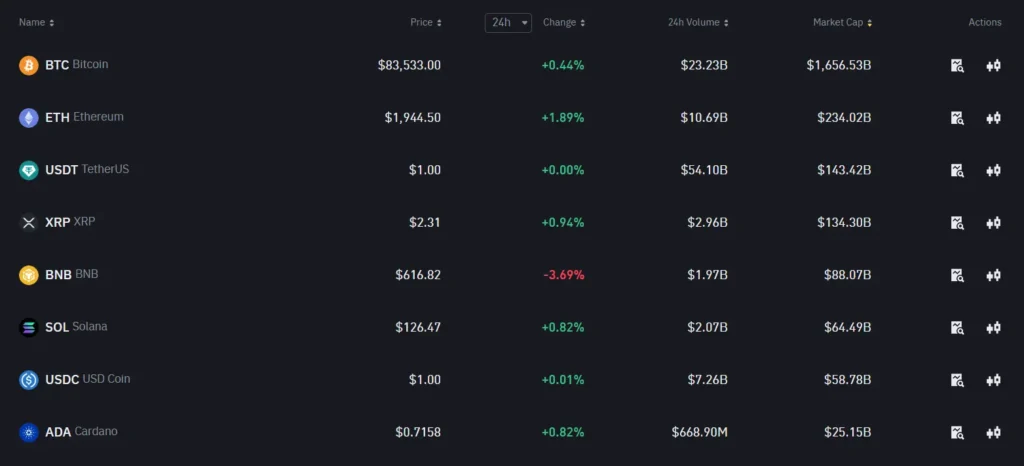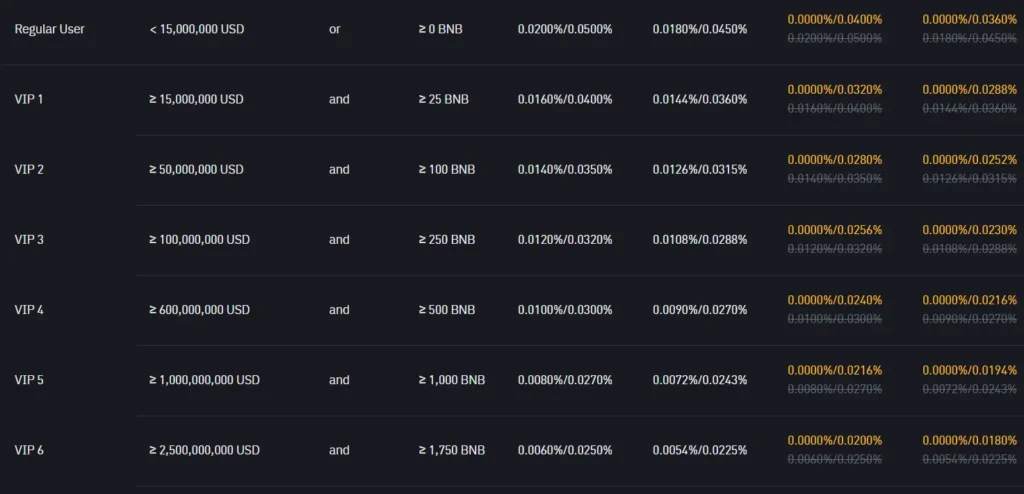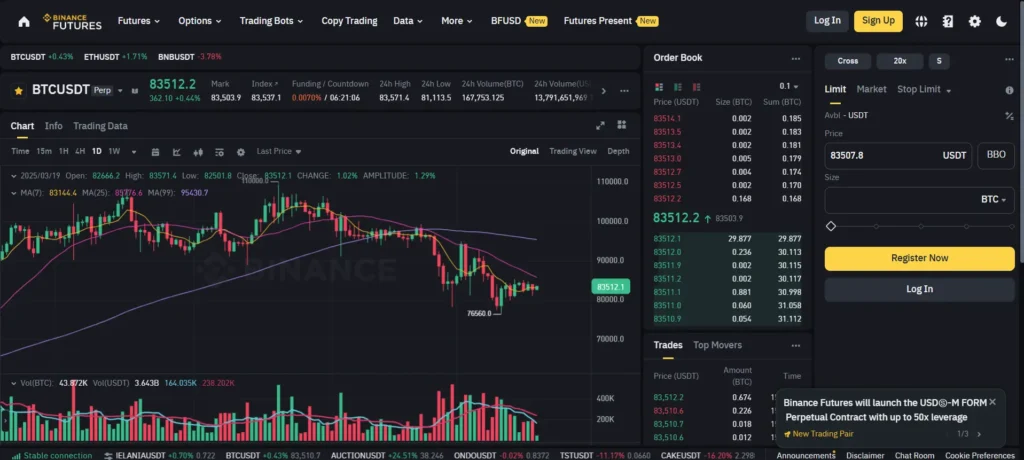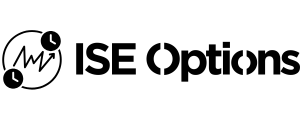Choosing between Binance and Bitfinex can be tough when you’re looking to trade cryptocurrencies. Both exchanges offer different features, fees, and trading experiences that might work better for your specific needs.
When comparing these platforms, Binance US scores higher overall with an 8.5 rating compared to Bitfinex, though Bitfinex slightly edges out in user-friendliness with an 8.1 versus Binance’s 8.0. This small difference might matter if ease of use is important to you.
Fee structures also differ between these exchanges. Binance typically charges lower fees, while Bitfinex sets rates at 0.10% for makers and 0.20% for takers. However, both platforms offer reduced fees for high-volume traders, which could save you money if you trade frequently.
Binance vs Bitfinex: At A Glance Comparison
Binance and Bitfinex are two popular cryptocurrency exchanges that offer trading services to users worldwide. When comparing these platforms, several key differences stand out.
Overall User Ratings:
- Binance: 8.1 overall score
- Bitfinex: Rated 8.1 for ease of use (slightly higher than Binance’s 8.0)
Key Features Comparison:
| Feature | Binance | Bitfinex |
|---|---|---|
| Trading Volume | Higher (consistently ranked top) | Lower but still among top exchanges |
| User Interface | User-friendly but slightly complex | Slightly more user-friendly |
| Security | Very strong security measures | Good security but fewer resources |
| Available Cryptocurrencies | Extensive selection | Smaller but solid selection |
| Fee Structure | Generally lower fees | Slightly higher fees |
Binance has established itself as the more dominant exchange with higher trading volumes and more extensive resources. You’ll find a wider variety of cryptocurrencies and trading options on Binance.
Bitfinex offers a slightly more intuitive interface according to user reviews. This makes it potentially better for beginners who value simplicity over extensive features.
Both exchanges rank among the top cryptocurrency platforms globally. Your choice between them should depend on your specific trading needs.
If you prioritize variety and lower fees, Binance might be your better option. If ease of use matters more to you, Bitfinex could be the better choice.
Binance vs Bitfinex: Trading Markets, Products & Leverage Offered
Binance and Bitfinex both offer diverse trading markets, but with notable differences that might affect your trading experience.
Trading Pairs
Binance supports over 350 cryptocurrencies and 1,000+ trading pairs. Bitfinex offers fewer options, with approximately 180+ tokens and 300+ trading pairs.
Trading Products
| Feature | Binance | Bitfinex |
|---|---|---|
| Spot Trading | ✓ | ✓ |
| Futures | ✓ | ✓ |
| Options | ✓ | Limited |
| Margin Trading | ✓ | ✓ |
| Staking | ✓ | ✓ |
| NFT Marketplace | ✓ | ✗ |
Leverage Options
Binance allows up to 125x leverage on certain futures contracts, depending on your account level and the specific trading pair.
Bitfinex offers more conservative leverage options, with up to 10x for margin trading as indicated in the search results.
Special Features
Binance includes a wider range of products like Binance Earn, Launchpad for new token offerings, and a more robust derivatives platform.
Bitfinex focuses more on professional traders with advanced order types and a lending market where you can lend your crypto to margin traders for interest.
Both exchanges provide trading bots and API access for automated trading strategies, but Binance generally offers more tools for beginners and advanced traders alike.
Your trading style and capital requirements will determine which platform better suits your needs.
Binance vs Bitfinex: Supported Cryptocurrencies
When choosing between Binance and Binance, the variety of cryptocurrencies available on each platform is an important factor to consider. Binance clearly leads in this category, offering a significantly larger selection of digital assets.

Binance supports over 350 cryptocurrencies, making it one of the most comprehensive exchanges on the market. You’ll find all major coins and many smaller altcoins, giving you extensive trading options.

Bitfinex, while still offering a robust selection, supports fewer cryptocurrencies overall. The platform focuses more on providing advanced trading features for professional traders rather than maximizing the number of available coins.
Binance Supported Cryptocurrencies:
- Bitcoin (BTC)
- Ethereum (ETH)
- Binance Coin (BNB)
- Hundreds of altcoins
- Regular additions of new tokens
Bitfinex Supported Cryptocurrencies:
- Bitcoin (BTC)
- Ethereum (ETH)
- Tether (USDT)
- Dozens of additional altcoins
- Focus on major market cap coins
If you’re looking to trade niche or newly launched tokens, Binance will likely be your better option. The exchange regularly adds new cryptocurrencies as they gain popularity or legitimacy in the market.
For traders focused primarily on major cryptocurrencies with high liquidity, either exchange provides sufficient options. However, Binance’s wider selection gives you more flexibility to diversify your portfolio across emerging projects.
Binance vs Bitfinex: Trading Fee & Deposit/Withdrawal Fee Compared
When comparing Binance and Bitfinex, understanding their fee structures is crucial for your trading strategy.
Trading Fees

Binance offers lower standard trading fees than Bitfinex. Binance charges up to 0.1% for makers and takers, while Bitfinex charges 0.1% for makers and 0.2% for takers.

Both exchanges offer fee discounts for high-volume traders. You can reduce your fees by holding their native tokens (BNB for Binance, LEO for Bitfinex).
| Exchange | Maker Fee | Taker Fee | Volume Discounts |
|---|---|---|---|
| Binance | Up to 0.1% | Up to 0.1% | Yes |
| Bitfinex | 0.1% | 0.2% | Yes |
Deposit Fees
Both platforms typically offer free crypto deposits. Fiat deposits vary by method and region.
Withdrawal Fees
Withdrawal fees differ by cryptocurrency on both platforms. Binance often has slightly lower withdrawal fees for most popular coins.
Bitfinex charges network fees for crypto withdrawals, which can fluctuate based on network congestion.
For fiat withdrawals, both exchanges charge fees that vary by withdrawal method and your location.
You should check their current fee pages before trading, as crypto exchange fees can change frequently.
Remember that actual costs extend beyond the base fees. Consider factors like spread, liquidity, and exchange rates when calculating your total trading expenses.
Binance vs Bitfinex: Order Types
When trading on cryptocurrency exchanges, the types of orders available can greatly impact your strategy. Both Binance and Bitfinex offer several order options, but they differ in complexity and variety.
Binance Order Types:
- Market orders
- Limit orders
- Stop-limit orders
- OCO (One-Cancels-the-Other)
- Trailing stop orders
Binance provides a straightforward interface that makes placing these orders relatively simple. Even newer traders can navigate the basic order types without much trouble.
Bitfinex Order Types:
- Market orders
- Limit orders
- Stop orders
- Stop-limit orders
- Fill-or-Kill
- Trailing stop
- Post-only
- Hidden orders
Bitfinex offers a more complex trading interface with additional advanced order types. This complexity provides more tools for experienced traders but might overwhelm beginners.
You’ll find that Bitfinex’s advanced order options give you more control for sophisticated trading strategies. The hidden orders feature, for example, allows you to place orders that don’t appear in the order book.
If you’re just starting out, Binance’s simpler approach might be more suitable. The interface is cleaner and focuses on the most commonly used order types.
Both platforms support conditional orders that execute based on market conditions, but Bitfinex generally offers more customization options for professional traders.
Binance vs Bitfinex: KYC Requirements & KYC Limits
Both Binance and Bitfinex require Know Your Customer (KYC) verification to use their platforms fully. This process helps prevent fraud and ensures compliance with regulations.
Binance KYC Requirements:
- Basic verification requires personal information and identity document
- Advanced verification may need proof of address
- Mandatory for most trading features and withdrawals
Bitfinex KYC Requirements:
- Personal information and proof of identity needed
- Verification is essential for accessing advanced features
- Process can be more stringent than some other exchanges
Withdrawal Limits:
| Exchange | Unverified | Verified |
|---|---|---|
| Binance | Limited to 2 BTC daily | Up to 100 BTC daily |
| Bitfinex | Highly restricted | Full platform access |
Without completing KYC on either platform, your trading capabilities will be severely limited. This includes restrictions on deposit and withdrawal amounts.
Both exchanges have professional trading terminals that become accessible after verification. The verification process helps you gain access to advanced charting functionality and other trading tools.
Remember that KYC requirements may change based on your location and current regulations. Always check the latest requirements on each platform’s official website.
Binance vs Bitfinex: Deposits & Withdrawal Options
Both Binance and Bitfinex offer various methods to deposit and withdraw funds, but they differ in several important ways.
Binance supports more than 50 fiat currencies through multiple payment options. You can use credit/debit cards, bank transfers, and various third-party payment processors like Simplex and Paxful.
For cryptocurrency transactions, Binance allows deposits and withdrawals for hundreds of digital assets with generally faster processing times.
Bitfinex has more limited fiat options, supporting primarily USD, EUR, GBP, and JPY. Bank wire transfers are the main method for fiat transactions, which may take 5-10 business days to process.
Cryptocurrency operations on Bitfinex support fewer coins than Binance but include all major cryptocurrencies with comparable processing times.
| Feature | Binance | Bitfinex |
|---|---|---|
| Fiat currencies | 50+ | Primarily USD, EUR, GBP, JPY |
| Fiat deposit methods | Cards, bank transfers, third-party processors | Mainly bank wire transfers |
| Crypto options | 350+ coins | 100+ coins |
| Withdrawal fees | Varies by cryptocurrency | Generally higher than Binance |
Minimum deposit amounts are lower on Binance, making it more accessible for beginners. Bitfinex often requires higher minimums, especially for wire transfers.
Withdrawal processing times for cryptocurrencies are similar on both platforms, but Binance typically offers faster fiat withdrawals through its multiple payment channels.
Binance vs Bitfinex: Trading & Platform Experience Comparison
When choosing between Binance and Bitfinex, the trading platform experience is crucial to your success as a trader. Both exchanges offer robust trading platforms but differ in several key aspects.

Binance provides a more user-friendly interface with an overall score of 8.0 for ease of use. The platform is designed to accommodate both beginners and advanced traders with multiple interface options.
Bitfinex slightly edges out with an 8.1 rating for user-friendliness according to reviewer comparisons. However, it generally caters more to experienced traders with its advanced charting tools.
Trading Features Comparison:
| Feature | Binance | Bitfinex |
|---|---|---|
| User Interface | Clean, intuitive | Advanced, technical |
| Mobile App | Highly rated | Functional but less intuitive |
| Order Types | Extensive | Comprehensive |
| Charting Tools | Good | Excellent |
Binance offers more variety in terms of available cryptocurrencies, making it a better choice if you want to trade a wide range of altcoins. The platform also provides higher liquidity for most trading pairs.
Bitfinex shines in its advanced trading features and analytical tools. You’ll find detailed market depth charts and customizable trading screens that professional traders appreciate.
Both platforms offer margin trading, but their approaches differ in terms of leverage limits and liquidation processes. Binance tends to be more accessible for newer margin traders.
Trading fees are competitive on both platforms, though Binance often offers more promotional discounts and lower fees for high-volume traders.
Binance vs Bitfinex: Liquidation Mechanism
When trading with leverage on crypto exchanges, understanding the liquidation process is crucial for your risk management. Both Binance and Bitfinex have mechanisms to protect their platforms from significant losses.
Binance uses a tiered liquidation system. When your margin ratio falls below certain thresholds, you’ll receive warnings. If your position continues to lose value, Binance will start liquidating your assets automatically.
Bitfinex recently made headlines with high trading liquidations worth $144.68 million during market volatility, according to Phoenix data. This exceeded Bybit’s $130.18 million during the same period.
The liquidation speed differs between platforms. Binance tends to liquidate positions more gradually, giving you some time to add funds. Bitfinex’s approach is often more aggressive.
Liquidation Fees:
| Exchange | Liquidation Fee |
|---|---|
| Binance | 0.5-1.0% |
| Bitfinex | Up to 1.5% |
Both exchanges use insurance funds to handle liquidations that occur during extreme market conditions. These funds help protect traders from socialized losses.
Bitfinex offers more advanced trading options but comes with more complex liquidation rules. Binance’s system is more straightforward and generally considered more beginner-friendly.
The key difference is that Binance’s liquidation process is more transparent and predictable, while Bitfinex’s mechanism can be less forgiving during volatile market conditions.
Binance vs Bitfinex: Insurance
When choosing between Binance and Bitfinex, insurance is an important factor to consider. This protection can safeguard your investments if something goes wrong.
Binance offers the Secure Asset Fund for Users (SAFU). This emergency insurance fund was created in 2018 to protect user assets. Binance allocates 10% of trading fees to this fund, which has grown significantly over time.
SAFU acts as a safety net if the exchange faces security breaches or hacking attempts. This gives you additional peace of mind when trading on their platform.
Bitfinex’s insurance approach is more limited compared to Binance. The exchange doesn’t maintain a dedicated insurance fund like SAFU for general user protection.
However, Bitfinex does offer some coverage for specific situations. Their focus is primarily on robust security measures rather than comprehensive insurance programs.
When comparing the two exchanges on insurance:
| Exchange | Dedicated Insurance Fund | Coverage Details |
|---|---|---|
| Binance | Yes (SAFU) | Covers security breaches, significant protection |
| Bitfinex | No | Limited coverage, relies more on security measures |
You should consider how important insurance is for your trading strategy. If having a dedicated fund gives you more confidence, Binance’s SAFU provides an advantage in this category.
Remember to evaluate this alongside other factors like fees, available cryptocurrencies, and security features before making your decision.
Binance vs Bitfinex: Customer Support
When choosing a crypto exchange, customer support can make a big difference in your experience. Based on user feedback, Binance scores higher in this area.
Binance has a customer support rating of 7.1 compared to Bitfinex’s 5.2. This suggests users find it easier to get help when using Binance.
Both platforms offer several support channels:
Binance Support Options:
- 24/7 live chat
- Email support
- Extensive help center
- Active community forums
Bitfinex Support Options:
- Email tickets
- Knowledge base
- Community channels
Response times differ between the platforms. Binance typically responds to inquiries within 24 hours. Bitfinex may take longer, especially during busy periods.
Binance offers support in more languages, making it accessible to a global audience. This is helpful if English isn’t your first language.
For new users, Binance’s support system is more beginner-friendly. Their help articles use simpler terms and provide step-by-step guides.
Remember that during market volatility or major updates, support response times may increase on both platforms. It’s best to check their status pages for any known issues before contacting support.
Binance vs Bitfinex: Security Features
When choosing a crypto exchange, security should be your top priority. Both Binance and Bitfinex have implemented strong security measures, but there are some important differences to consider.
Binance offers highly-improved security features that help protect your assets. They use two-factor authentication (2FA), address whitelisting, and advanced encryption to secure your account.
Binance also maintains a Secure Asset Fund for Users (SAFU), which is an emergency insurance fund. This fund holds 10% of all trading fees and can be used to compensate users in case of a security breach.
Bitfinex has stepped up its security following past incidents. They now use cold storage for 99.5% of client funds, keeping them offline and away from potential hackers.
Key Security Features Comparison:
| Feature | Binance | Bitfinex |
|---|---|---|
| Two-Factor Authentication | Yes | Yes |
| Cold Storage | Yes | Yes (99.5% of funds) |
| Insurance Fund | Yes (SAFU) | Limited |
| Security History | Strong track record | Has experienced hacks |
| Device Management | Yes | Yes |
| Anti-phishing Code | Yes | No |
Bitfinex has had some security issues in the past, including a major hack in 2016. This history might concern you if security is your main priority.
Both exchanges require identity verification to comply with regulations, which adds an extra layer of security for your account.
Is Binance A Safe & Legal To Use?
Binance is generally considered a safe platform for cryptocurrency trading. It ranks among the largest exchanges globally with strong security measures in place. Most user funds are stored in cold wallets, which aren’t connected to the internet and provide better protection against hacks.
Despite its safety features, Binance has faced security challenges in the past. The exchange has worked to improve its systems after these incidents, implementing additional safeguards for users.
Regarding legality, Binance’s status varies by location. The exchange has faced regulatory scrutiny in several countries. You should check if Binance is allowed to operate in your region before creating an account.
Binance offers security features you can use to protect your account:
- Two-factor authentication (2FA)
- Anti-phishing codes
- Withdrawal address management
- Device management options
For maximum security, it’s recommended that you:
- Enable all security features
- Use a strong, unique password
- Consider moving large holdings to a personal wallet
- Verify all withdrawal addresses carefully
Binance has shown commitment to compliance by adapting to regulatory requirements in different jurisdictions. The exchange continues to work on obtaining proper licenses where needed.
Remember that cryptocurrency trading always carries inherent risks regardless of the platform you choose.
Is Bitfinex A Safe & Legal To Use?
Bitfinex has proven itself as a legitimate cryptocurrency exchange operating since 2012. Despite experiencing several security incidents in the past, Bitfinex has significantly improved its security measures.
The exchange now stores over 99% of user funds in cold storage, keeping them offline and away from potential hackers. This is a critical security feature that protects your assets.
Two-factor authentication (2FA) is implemented to provide an extra layer of protection for your account. This means you’ll need both your password and a verification code to access your funds.
Key Security Features:
- Cold storage for 99% of funds
- Two-factor authentication
- Advanced security protocols
- Regular security updates
Bitfinex is legally registered and operates in compliance with regulations in its jurisdiction. However, availability varies by country due to different regulatory requirements.
You should note that Bitfinex has faced some regulatory challenges in certain regions. The exchange is not available to U.S. residents due to regulatory concerns.
Before using Bitfinex, check if it’s permitted in your country. While the platform itself is legitimate, legal status depends on your location’s specific cryptocurrency regulations.
For most users outside restricted regions, Bitfinex offers a secure trading environment with robust security practices that have been strengthened after past incidents.
Frequently Asked Questions
Choosing between cryptocurrency exchanges like Binance and Bitfinex requires understanding key differences in their offerings. These platforms vary in several important aspects that might affect your trading experience.
What are the main differences in trading fees between Binance and Bitfinex?
Binance generally offers lower trading fees compared to Bitfinex. Binance’s standard fee structure starts at 0.1% per trade and can be reduced further by using BNB tokens or increasing your trading volume.
Bitfinex has a slightly higher fee structure starting at 0.2% for makers and 0.2% for takers. Both exchanges offer fee discounts for high-volume traders.
Trading fees can significantly impact your profits, especially if you make frequent trades or deal with large volumes.
How do Binance and Bitfinex security measures compare?
Both exchanges implement strong security measures, but they differ in their approaches. Binance maintains a Secure Asset Fund for Users (SAFU) which acts as an emergency insurance fund.
Bitfinex recovered from a major hack in 2016 and has since strengthened its security protocols. Both platforms offer two-factor authentication, withdrawal address whitelisting, and cold storage for most funds.
Binance has faced fewer security incidents in recent years, giving it a slight edge in overall security reputation.
Which exchange offers a wider variety of cryptocurrencies, Binance or Bitfinex?
Binance clearly leads in cryptocurrency variety with support for over 350 different cryptocurrencies and 1,000+ trading pairs. This makes it an excellent choice if you want to trade lesser-known altcoins.
Bitfinex offers around 170 cryptocurrencies, focusing more on established coins and tokens. The exchange puts more emphasis on trading features than on listing every new cryptocurrency.
Your choice might depend on whether you prefer more options or a more curated selection of digital assets.
What are the differences in user interface and ease of use between Binance and Bitfinex?
Binance offers a more user-friendly interface with both basic and advanced views to accommodate different skill levels. The platform is generally considered easier to navigate for beginners.
Bitfinex has a more complex interface geared toward experienced traders. It offers advanced charting tools and trading features but has a steeper learning curve.
First-time crypto traders might find Binance more approachable, while professional traders often appreciate Bitfinex’s comprehensive tools.
How does the liquidity and volume of Binance compare to that of Bitfinex?
Binance consistently ranks as one of the highest-volume exchanges in the world, typically processing billions in daily trading volume. This high liquidity means better price execution and less slippage.
Bitfinex offers good liquidity but handles significantly less volume than Binance. The exchange still maintains respectable liquidity for major trading pairs.
Higher liquidity generally means you can execute larger trades without significantly affecting the market price.
What are users’ reviews and experiences with Binance and Bitfinex customer support?
Binance customer support receives mixed reviews but has improved over time. The exchange offers ticket-based support, live chat, and an extensive knowledge base.
Bitfinex support is generally rated as responsive but can be slow during high-volume periods. Some users report language barriers when dealing with support agents.
Both exchanges have faced criticism for support delays during market volatility, which is common across the cryptocurrency industry.
Binance vs Bitfinex Conclusion: Why Not Use Both?
Many cryptocurrency traders feel they must choose between Binance and Bitfinex. In reality, you can benefit from using both exchanges for different purposes.
Binance offers a wider selection of coins and a user-friendly interface that’s easier for beginners to navigate. Its fee structure is competitive, and it has established itself as one of the most secure platforms available.
Bitfinex, while more complex to use, provides advanced trading features that experienced traders appreciate. Its platform may require more technical knowledge but offers sophisticated tools for serious trading.
Here’s a quick comparison of key features:
| Feature | Binance | Bitfinex |
|---|---|---|
| Coin Selection | Larger variety | More limited |
| User Interface | More intuitive | More complex |
| Target User | Beginners to advanced | Primarily advanced |
| Trading Tools | Good | Excellent |
You can use Binance for its variety of altcoins and straightforward trading experience. Meanwhile, Bitfinex can serve as your platform for more advanced trading strategies and features.
Your trading needs might vary depending on your experience level and goals. Having accounts on both exchanges gives you flexibility to use the best features of each.
Remember to consider security practices regardless of which exchange you use. Enable two-factor authentication and use strong passwords for both platforms.
